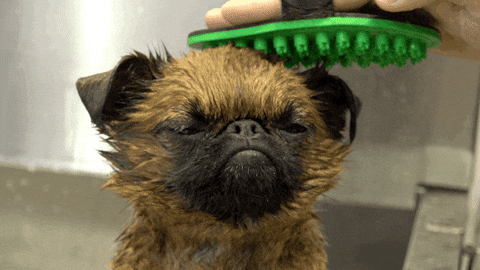Have you ever noticed your dog scratching obsessively and just shrugging it off? “It’s just a scratch,” you think, but what if that innocent scratch was more than just an itch?
Picture this: you’re lounging on the couch, your loyal companion by your side, scratching and biting at its fur. You don’t think much of it; maybe you even laugh a bit at the goofy scratching positions, but that moment of laughter may be hiding a much deeper issue that could impact your health as much as your pet’s. Yes, we’re talking about fleas—tiny pests that do more harm than you’d ever imagine.

A True Tale of “The Flea Invasion”
A few years back, I had a close friend—let’s call her Sarah—who had this adorable little terrier mix named Toby. Toby was Sarah’s world. But one summer, Toby couldn’t stop scratching. He’d scratch his back, nibble at his paws, and then scratch some more. At first, Sarah just thought it was the heat. But soon, Toby’s scratching turned to yelping, his fur started thinning in spots, and his skin looked red and irritated. She took him to the vet and found out the culprit: fleas.

To make matters worse, the vet explained that fleas could not only cause discomfort to Toby but could also spread to Sarah and her family. Turns out, these tiny pests carry serious diseases that can jump from pets to humans, and from there, things escalated rather quickly. Within weeks, Sarah was dealing with flea bites of her own, an itchy rash, a full-blown “flea invasion” in her house, and, of course, fewer visits from yours truly.
Fleas: The Original Tiny Troublemakers
Most of us tend to think of fleas as harmless annoyances—tiny bugs that make pets scratch a bit more than usual. But fleas are much more than itchy little nuisances; they can actually carry and spread some pretty alarming diseases to both animals and humans. I know, terms like Bartonella y tapeworms may sound like they belong in a biology textbook (or a Harry Potter spell book!).

But these are real, potentially serious health risks that fleas can bring into your home. Let’s break it down in a way that doesn’t feel like cramming for a science quiz.
First things first: fleas may be small, but they’ve got big dreams… like turning your home into a flea motel. And once they’re there, they’re not exactly considerate guests. You see, fleas don’t just hitch a ride on your dog; they lay eggs everywhere. Think of it like they’re Airbnb-ing your living room, carpet, and, yes, even your bed.
Just one female flea can lay up to 50 eggs a day, which means within a week, your dog’s scratching could lead to a full-on flea metropolis in your home. This is exactly what happened to Sarah. Despite treating Toby for fleas, the eggs left around the house kept hatching, turning her home into a breeding ground.
The Health Hazards for Humans and Pets Alike
Imagine Sarah’s horror when she found out the health risks she and her family were now exposed to. Not only was she itching from flea bites, but she learned that fleas could lead to quite a number of diseases, some so horrible, you can hardly spell.

Disease #1: “Cat Scratch Fever” (But It Doesn’t Just Affect Cats)
Here’s the deal with the “cat scratch fever.” It’s caused by a bacteria called Bartonella, which fleas can carry and spread to your pet. Your dog doesn’t have to be swiping at you like a cat for you to get it, either. You can catch it through a simple scratch or, occasionally, even through flea dirt (yep, that’s a nice way of saying flea poop) that finds its way onto your skin. And let me tell you, flea dirt is everywhere on an infested pet.
But don’t worry—if you end up scratching a flea-ridden dog, you’re not going to keel over on the spot. Symptoms of this Bartonella thing can range from a mild fever to swollen lymph nodes. In other words, you’ll just feel “off” enough to question your life choices but maybe not enough to die. Maybe.
Disease #2: Tapeworms: Because One Unwelcome Guest Isn’t Enough
Now, let’s talk tapeworms. Gross, yes, but if you’ve got kids (or a very curious dog), this is worth knowing. Fleas can carry tapeworm eggs, and if your pet (or heaven forbid, your toddler) accidentally swallows a flea, you’ve got yourself a tapeworm situation. This isn’t exactly the type of dinner guest you’d hope for, but they’ll happily hang out in your intestines until you get rid of them.
And just to spice things up, tapeworm segments might occasionally exit stage left via your pet’s rear end, giving you a truly unforgettable experience to look back on. All it takes is one accidental flea bite to invite this little wormy friend into your life. Charming, right?
Disease #3: Murine Typhus—The Headliner You Didn’t Want
Here’s where things get even more fun. Fleas are known to carry the Rickettsia (flashes wand***) bacteria, which causes murine typhus. Yeah, I know, it sounds like something out of an old horror film, but this disease can bring on symptoms like fever, headache, and rash. It’s not something you want to add to your calendar. The best part? You’ll need antibiotics if it decides to make an appearance, so it’s better to keep your place flea-free from the get-go.
How to Keep Fleas (and Their Little Unpleasant Surprises) Out of Your Life
If you want to say goodbye to fleas for good, here’s how to tackle them at all levels—from your pet to your home.

- Inspect and Groom Your Pet Regularly Fleas are tiny, but they’re not completely invisible. Regularly checking and brushing your dog’s fur—especially during warmer months—will help you catch fleas before they become a full-blown problem. Think of it as your dog’s own TSA screening! Use a flea comb, like the Hertzko Flea Comb on Amazon, designed to capture even the smallest fleas and flea eggs while being gentle on your pet’s skin. Grooming wipes, like Earth Rated Dog Wipes, can help clean your dog and keep their coat fresh between baths.
- Create a Flea-Free Zone at Home
- Fleas thrive in fabric, so keep your home as clean as possible. Wash your dog’s bedding weekly in hot water, vacuum frequently, and pay attention to carpets, furniture, and any areas your pet frequents. Here’s a little hack: sprinkle some salt or baking soda on the carpet, let it sit for an hour, and then vacuum. It’s like an unwelcome spa day for fleas, drying them out before they even get a chance to spread!
- For added protection, try a flea-specific home spray like Vet’s Best Flea & Tick Home Spray, which uses natural oils to repel fleas and ticks without harsh chemicals.
- Also, consider a pet-safe, flea-killing powder such as Diatomaceous Earth from Harris, which can be spread on carpets and vacuumed up to eliminate fleas in their larval stages.
- Use Flea Prevention Products Consistently Fleas are tough little creatures, so prevention is key. Talk to your vet about the best preventive option for your pet, which might include a flea collar, monthly topical treatment, or an oral medication. Be consistent with whichever method you choose to keep fleas from making a comeback. Popular products like the Seresto Flea Collar for Dogs offer up to 8 months of flea protection. For a monthly topical option, Frontline Plus has been trusted by pet owners for years. Alternatively, you could try a convenient oral medication like NexGard (available through your vet), which offers month-long protection in a chewable form.
Taking these steps consistently will help keep your home and pet free from the dreaded flea invasion. Remember, prevention is always easier than fighting a full-on infestation—so check, clean, and treat proactively!

A Flea-Free, Healthy Future
Now, although Sarah and Toby didn’t die (our friendship did though, but that’s a story for another day), Sarah learned the hard way that fleas are more than just a nuisance; they’re a serious threat to both her pets and her family’s health. But with a diligent approach, Toby was soon flea-free, and Sarah managed to reclaim her home. Now, every spring and summer, she’s extra cautious about keeping her house clean, treating Toby with flea prevention, and checking him regularly.
So, next time your dog’s scratching seems out of hand, don’t just chalk it up to an itch. Fleas may be small, but the health risks they carry are anything but minor. By staying vigilant, treating your pets, and keeping a clean home, you can enjoy your furry friend’s company without worrying about these dangerous little hitchhikers. So, next time your dog starts scratching, take a closer look—it might just be the start of something you’ll want to tackle right away!




